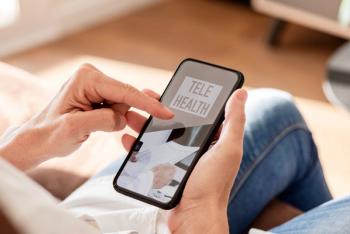
How practices can shift operations to manage virtual patient engagement
Telehealth platforms play a key role as physicians reconfigure office visits, adjust to new regulations, and seek to restore their practices.
With the country opening up, physicians are seeing a pent-up demand for services even as they work to reconfigure their practices.
Many patients are deeply concerned about the safety of visiting the doctor’s office. Some practices are in financial peril due to the shutdown. Long-standing customs like patients from rural areas
The solution to all of these challenges is technology that helps physicians become more efficient, practices to communicate better internally, and patients to receive care in the most appropriate manner.
The virtual waiting room
When circumstances demand an in-person visit, technology can play a vital role in reducing patient stress and minimizing unnecessary contact. For example, a telehealth platform allows front-desk personnel to quickly send a secure, templated message to that day’s appointment list to let them know what to expect when they arrive. The message could include a link to online forms they can submit in advance (no more clipboards) or a reminder to bring a list of current medications.
The message might ask patients to text when they arrive and remain in their vehicle until the doctor is ready to see them. This creates a safer office environment for everyone while keeping the patient communication channel open.
Once the visit is complete, a staffer can text the patient a secure payment link, providing contact-less checkout. Some patients may receive post-care instructions via text.
Telehealth visits
As both patients and providers have learned during the pandemic, telehealth visits are appropriate for a wide variety of services such as triage (does the condition warrant an office visit), procedure follow-ups, simple diagnoses, medication-related advice, and behavioral health visits. Of course, relaxation of restrictions on government/private payer payment for telehealth will have to continue for some of these to remain viable.
Some practices will want to continue the virtual-first approach they adopted during the recent lockdown. One reason is the efficiency experienced by both providers and patients, allowing providers to see more patients without extending their schedules and limiting time spent sanitizing treatment rooms.
A second reason is the availability of telehealth platforms that go beyond text and messaging abilities to include live video via cellular service. Video visits have become an essential part of primary care during the pandemic, and providers are eager to continue that trend. Some may opt to use telehealth visits in lieu of in-office visits for a variety of situations.
Technology considerations
Any telehealth platform your practice considers should contain the following elements:
- 100% secure and HIPAA compliant communications which cannot be edited nor deleted and are archived in the patient’s chart, allowing practitioners to quickly and conveniently reference past communication with their patients
- Multimodality communications which support bi-directional messages that engage patients in their preferred manner including secure text messaging, PDFs, images, video conferencing, and social media access
- An intuitive interface that takes hours or days for staff and clinicians to learn, not weeks or months
- Full integration with EHR and PMS systems
- No requirement for patients to download an app or log onto a portal to communicate with clinicians or office staff
The security component deserves special attention. Some practices will be tempted to use free communications platforms as they work to return to pre-COVID encounter levels. Not only do these channels fail to guarantee the safety of your data, many don’t store your data long term. The money you save on the front end may be completely eclipsed in the event of a
Having an intuitive interface is important for getting staff and clinicians using the platform to communication with patients. It’s also key to improving internal communications. When everyone in the office (admins, nurses/nurse practitioners/PAs, and physicians) experiences streamlined communications, morale soars. Instead of chasing down providers to get questions answered and playing endless games of phone tag to follow up with patients, clinicians can enter the platform and perform multiple tasks from the same interface: ask a question, send a patient reminder, enter multiple e-prescriptions, and more.
All of the items on the list above are essential to providers looking to expand their practice. If virtual visits and fast, easy communication can be part of the experience, physicians have the option to expand well beyond the geographic area they previously served. This is welcome news in parts of the country where there’s a physician shortage and patients wait weeks or months for primary care appointments. It’s also a boon for rural areas where patients must travel miles for primary care and even longer distances to see a specialist.
Looking ahead
In the not-too-distant future, telehealth platforms will be extended to include more capabilities aimed at facilitating patient care. For example, collecting patient data such as vital signs with the goal of sending an alert if a COVID-19-exposed individual spikes a temperature. Taken a step further, physicians could use the platform to receive alerts about changes in vitals for high-risk patients or patients they wish to monitor more closely than usual.
Until then, providers can certainly lean on today’s sophisticated telehealth platforms to prepare for the expected surge of patients as the healthcare system regains its equilibrium following the pandemic.
About the Author
Newsletter
Optimize your practice with the Physicians Practice newsletter, offering management pearls, leadership tips, and business strategies tailored for practice administrators and physicians of any specialty.










